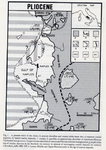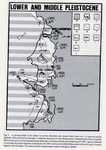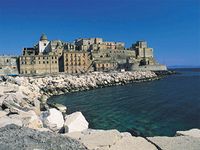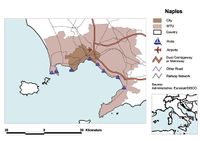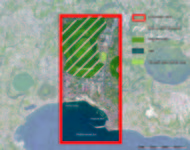Case Study B.2: Rione Terra-Potus Julius: Difference between revisions
| Line 34: | Line 34: | ||
''You can edit this map with the [[Special:MapEditor|map editor]]'' | ''You can edit this map with the [[Special:MapEditor|map editor]]'' | ||
{{#display_map: 40. | {{#display_map: 40.824433, 14.119413 Rione Terra-Potus Julius | ||
}} | }} | ||
Revision as of 19:12, 4 April 2019
>>>back to working groups overview
Rationale
- Why do you think this case is relevant? What is your hypothesis considering the landscape challenges?
- Format: 3-4 sentences
Location and scope
You can edit this map with the map editor
A Landscape System Analysis
A.1 Landscape layers and their system context
Geomorphology, landscape units and coastal typology
Rione Terra is located in the Province of Naples (Italy). From a geomorphologic point of view, the region is characterized by a gravel-like depression.The depression floors are composed by broad alluvional plains.As a consequence of the tectonics present in this area, after a period of tectonic calm that allowed a mature erosional land scape to develop across the litho-structural complex (in Early Miocene to Middle Pliocene.)(fig.1,fig.2)
Land use
- Napoli, being part of Italy, has undergone numerous changes over time. At present, the settlements have remained since ancient times, being numerous medieval monuments, castles, as well as ruins. The underground archaeological Rione Terra is a journey in the ancient Roman colony, Puteoli , founded in 194 BC and soon became a commercial port.
The course is located below the tuff rock overlooking the Gulf of Pozzuoli, between Nisida and Bay, and runs along the principal axes of the Roman city, hinges and decumani.
- Today, beneath Rione Terra, there lies a virtually untouched Roman towns.
Archaeologists have excavated and restored a four thousand square metre area of the ancient Roman acropolis and its entire underground urban fabric. Now it can be seen the two main arteries of the acropolis flanked by millers’ shops, ancient taverns and the houses of fishermen.
- From the infrastructure point of view, Napoli owns an airport, train lines across the city, buses. Being a port city, transport can also be done on water.
- Due to volcanic eruptions, the area became very fertile because of the lava minerals. Agriculture is based on grapes, tomatoes, lemons exotic fruits and native capers.
Green/blue infrastructure
The studied area has a high potential of development regarding green-blue infrastructure due to the dominant presence in the territory of the Gauro Mountain but also for the acces to the Mediterranean Sea.
Gauro Mountain is the volcanic formation with the highest pick it’s a part of the Regional Park situated in the Phlegraean Fields. This area is very important for the ecosystem and it’s also a protected area part of the Natura 2000 Network.
The mountain is an identity element for this zone, with flora and fauna specific for this type of territory and charcaterized by thick mediterranean vegetation like chestnut in the north side and plants like cistus[1], mastic trees[2] and myrtle[3] in the steep west side. Also, in the past, in the neigbhourhood territory of the mountain , was cultivated vines , valuable agriculture areas nowadays.
This important elements of green-blue infrastructure is in a continue changing because of the human intervention and also the urbanization causing in more cases pollution of the environment. We can see this urban development also in the crater of the Mount Gauro , where now is the Carney Park- a recreational facility of the US Navy.
Natura 2000 prevents this type of intervation in the green protected area.
.
</gallery>
Actors and stakeholders
- Who is driving changes in this landscape? Who is affected by those changes?
- Draw a stakeholder and/or power map: Who is affected highly but with low power? Who has high power but is not affected?
- Your case your powermap.jpg
add a caption
Sacred spaces and heritage
- Which places/elements hold cultural value and to whom?
- You may add a map and some images, please also explain in your caption why these elements are valuable
- Your case sacredspace1.jpg
add a caption
- Your case sacredspace2.jpg
add a caption
- Your case sacredspace3.jpg
add a caption
Visual appearance and landscape narrative
Rione Terra is the first settlement of Pozzuoli. It is placed on a hill,which stands 33 m from the sea. Its position has always been positive to control the arrival of the enemies from the sea and from the land. Unfortunately,due to bradyseisms and especially the earthquake in 1984,Rione Terra was the subject of a great work of retraining and restauration. Finally,it was opened in 2014. Today,this area is very interesting to visit,because it is a really overlapping of housing layers.
Through the years,many important people had been ispired from this place. A great example, which is able to summarise the essence is Alberto Angela's quote. The italian paleontoligist tells:There is a neighborhood where chapters of Pozzuoli's long history are overlapped like the pages of a book.
While,between VIII and IX century A.D.,there are some lines written in the Acts of St. Peter and Paul, from the apocryphal Gospel,they justified the sinking of the city to a miracle. It was opereted by the apostle Paolo to punish the city where was executed the master of the ship, whit which the saint arrived from Orient. Moreover,also the geographer Strabone,explains his thoughts about. He considered the fortress as the landing of the exiles of the island of Samo, who founded Dicearchia, the government of the correct ones.
Thanks to its suggestive character this area has been also the subject of lots of paintings.
In 1764 G.P.Bellori re-made a painting, which was lost. This one showed the port area and to the right there was a temple dedicated to Apollo,it was located on the first acropolis of Pozzuoli.
There are also other views from the nineteenth century,made by Franz Ludwig(1830),and the canvas made by Consalvo Carelli.
- Your case character1.jpg
add a caption
- Your case character2.jpg
add a caption
- Your case character3.jpg
add a caption
A.2 Summary of you landscape system analysis and your development Targets
- You can summarize your findings with an DPSI(R) Model or a Spider Diagram
- Link back to the Sustainable Development Goals: Which goals are at risk?
- What is your hypothesis for this landscape?
- Visualise your hypothesis with one graphic/pict
- Are there any existing initiatives taking action in this landscape? Do you have a critical perspective on that?
- Add text and visuals
- Your case your spider diagram or dpsir model.jpg
explain your analysis briefly in the caption
- Your case your hypothesis visual.jpg
explain your hypthesis briefly in the caption
A.3 Theory reflection
- Reflect on at least three international policy documents in relation to their local landscape case
- choose one international, one European and one national document
- You can choose references from our reading list
- Scope: 250 words
A.4 References
- give a full list of the references you have used for this section
Phase B: Landscape Evaluation and Assessment
B.1 Assessment Strategy
- Based on the hypothesis derived from your previous landscape systems analysis you are now asked to define the goals for assessing the landscape. Your assessment is the basis for evaluating the landscape status.
- Which elements and phenomena need to be mapped, why and how?
- This a text contribution, max 250 words
B.2 Mapping
- As defined by your assessment strategy you conduct the mapping and present your findings here
- As a minimum, at least three different themes need to be mapped, you may choose more if needed
- Your case your assessment mapping themel.jpg
briefly explain the findings of your mapping
- Your case your assessment mapping theme2.jpg
briefly explain the findings of your mapping
- Your case your assessment mapping theme3.jpg
briefly explain the findings of your mapping
B.3 Problem definition and priority setting
- Give a summary of the major findings of your mapping process, what are the problems/potentials identified?
- Draw a problems/potentials map
- Set priorities for the most relevant issues
- Your case problems potentials map.jpg
add caption here
B.4 Theory reflection
- Please reflect the assessment and evaluation methods used based on at least three readings
- Did you encounter limitations'
- 200 words test contribution
B.5 References
- give a full list of the references you have used for this section
Phase C – Strategy and Master Plan
C.1 Goal Setting
- Define strategic planning objectives based on the evaluation findings
- Link back to your original targets from section one and the Development Goals
- 150 words text contribution
C.2 Spatial Strategy and Transect
- translate your strategic goals into a vision
- develop a spatial translation of your vision
- exemplify your vision in the form of a transect with concrete interventions
- add map(s) and visualizations
- Your case spatial translaton vision.jpg
add caption here
- Your case transect.jpg
add caption here
- Your case transect detail1.jpg
add caption here
- Your case transect detail2.jpg
add caption here
C.3 From Theory of Change to Implementation
- For implementing your vision: Which partnerships are needed? Which governance model is required?
- Who needs to act and how? Draw and explain a change/process model/timeline
- Which resources are needed? On which assets can you build?
- add 150 words text and visuals
- Your case spatial your governance model.jpg
add caption here
- Your case spatial your process model.jpg
add caption here
C.4 References
- give a full list of the references you have used for this section
D. Process Reflection
- Reflect in your intercultural and interdisciplinary team on the outcomes of your study
- Which limitations were you facing?
- What have you learnt from each other?
- What would you do differently next time?
- You can also use diagrams/visuals
- 250 words text

